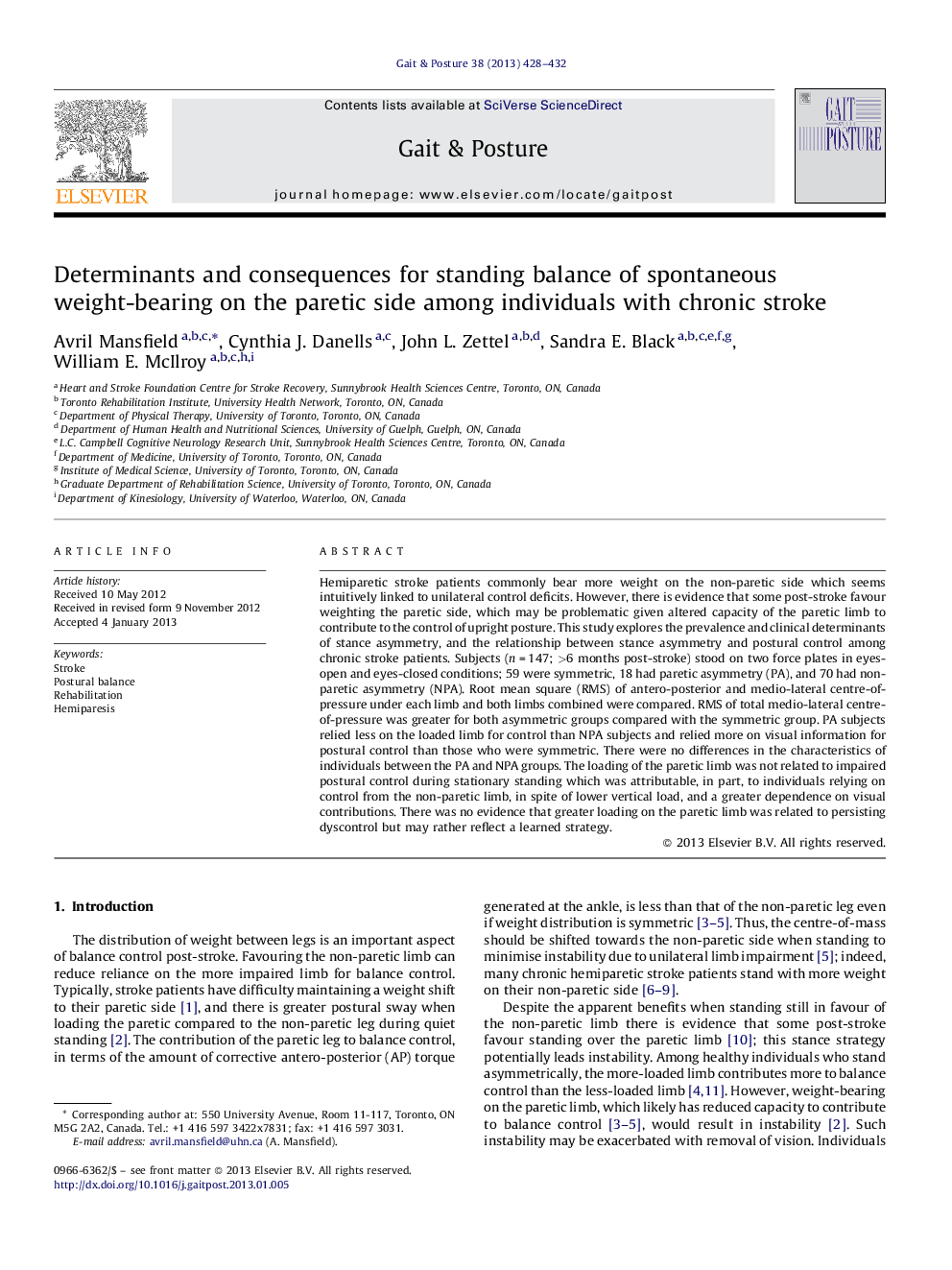| کد مقاله | کد نشریه | سال انتشار | مقاله انگلیسی | نسخه تمام متن |
|---|---|---|---|---|
| 6206613 | 1265650 | 2013 | 5 صفحه PDF | دانلود رایگان |
Hemiparetic stroke patients commonly bear more weight on the non-paretic side which seems intuitively linked to unilateral control deficits. However, there is evidence that some post-stroke favour weighting the paretic side, which may be problematic given altered capacity of the paretic limb to contribute to the control of upright posture. This study explores the prevalence and clinical determinants of stance asymmetry, and the relationship between stance asymmetry and postural control among chronic stroke patients. Subjects (n = 147; >6 months post-stroke) stood on two force plates in eyes-open and eyes-closed conditions; 59 were symmetric, 18 had paretic asymmetry (PA), and 70 had non-paretic asymmetry (NPA). Root mean square (RMS) of antero-posterior and medio-lateral centre-of-pressure under each limb and both limbs combined were compared. RMS of total medio-lateral centre-of-pressure was greater for both asymmetric groups compared with the symmetric group. PA subjects relied less on the loaded limb for control than NPA subjects and relied more on visual information for postural control than those who were symmetric. There were no differences in the characteristics of individuals between the PA and NPA groups. The loading of the paretic limb was not related to impaired postural control during stationary standing which was attributable, in part, to individuals relying on control from the non-paretic limb, in spite of lower vertical load, and a greater dependence on visual contributions. There was no evidence that greater loading on the paretic limb was related to persisting dyscontrol but may rather reflect a learned strategy.
⺠Some individuals post-stroke stand with more weight on the paretic limb. ⺠There is no evidence for a clinical profile of paretic asymmetry. ⺠Paretic asymmetry appears to promote reliance on vision for balance control.
Journal: Gait & Posture - Volume 38, Issue 3, July 2013, Pages 428-432
